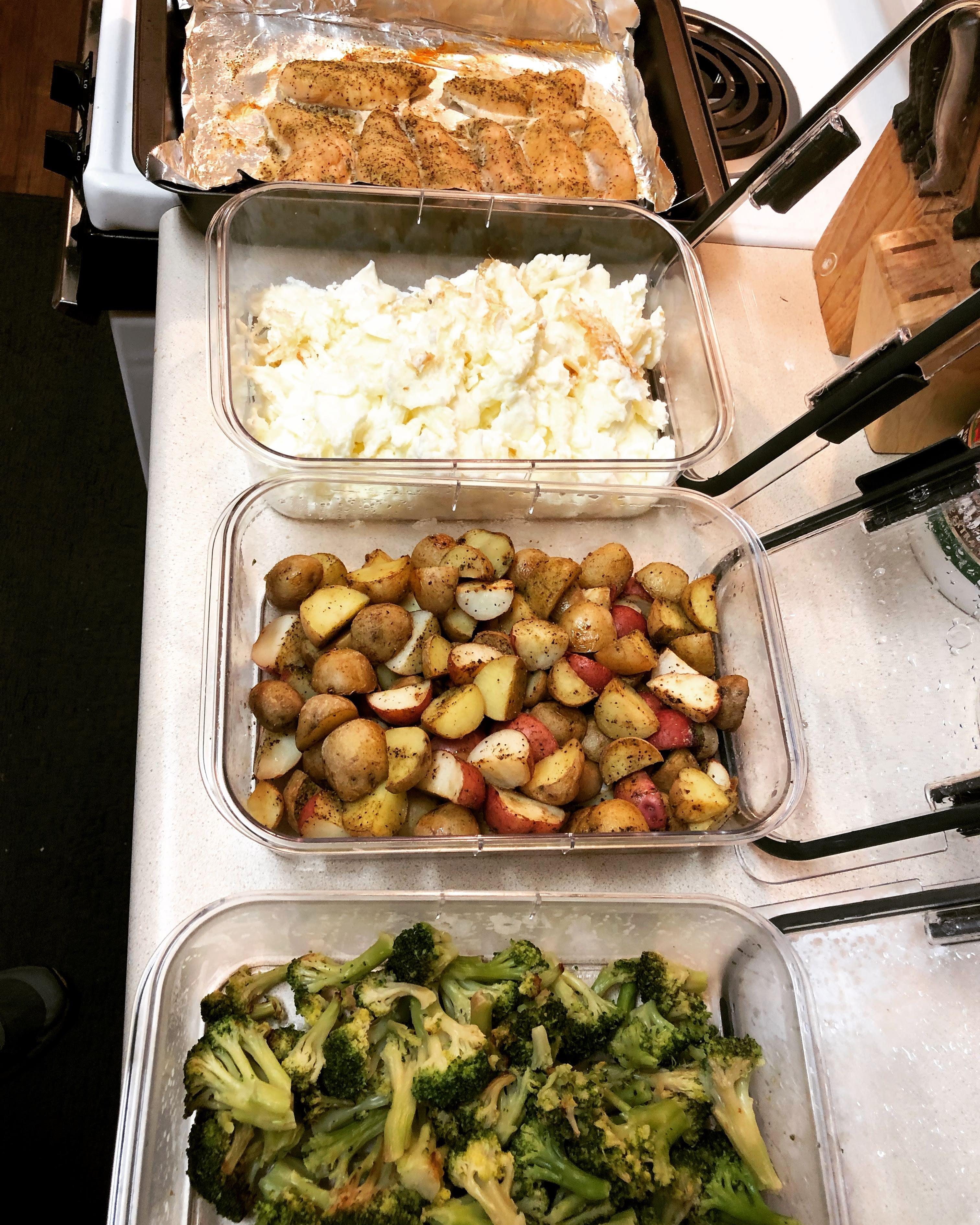5 steps to success with flexible dieting
The tips, techniques, and strategies that I’ve developed through my experiences over the last several years as a certified nutritionist.
Over the last several years, I’ve gone through an enormous learning curve with tracking my diet. This article is going to summarize what has taken me years of experience to learn, so that you know the obstacles that are going to be on your path.
My goal here is to make the process as easy as possible for you by giving you a way to handle those obstacles and challenges when you run into them.

Starting out
When I first started flexible dieting, logging my meals into MyFitnessPal was like putting together a thousand piece puzzle every day. Nobody gave me my macros or calorie amount. I just did some research and picked some that I thought would be right for me.
I started with logging in my first meals of the day and by the last meal, I was struggling to find something that would make up for wherever I was lacking. If I was short on my carb, protein, or fat goal, it was a struggle searching for a food item that could cover the one thing I was deficient in.
If I was low on fats, I’d have to consume a certain amount of something like heavy whipping cream. If it was carbs, I would eat something like an apple, but I would only eat so much as to hit my mark. Protein was fairly easy because of protein shakes and egg whites.
Eventually, I got really good at making my meals fit and hitting my macro amounts for each day. I didn’t get a scale until I realized I needed to actually weigh my food to get the most accurate amount. I would just eyeball my portion sizes or use measurements such as “1 cup”, “2 tablespoons”, or “1 scoop”, which can work for some things, but your best option is to let the scale do the work.
Don’t be surprised if you don’t get the results you want out of a process, when you’ve been eyeballing what you’ve been putting into it.
When I realized this, I thought to myself, “This is going to be a pain in the ass…“.
At first, it was, but I kept trying and got better with every attempt. Now, it’s second nature and I am a master at prepping my meals for the next day.
What it takes to succeed with your diet
Here are the 5 main steps you’ll need to repeat to diet successfully:
- Develop a plan
- Prepare
- Execute the plan
- Analyze results
- Adjust if necessary
If you do not plan ahead, and then prepare according to that plan, you are setting yourself up for failure.
I cannot stress this enough. The most successful clients I’ve had are the ones who planned their days and week ahead of time. They know what’s coming, so they know what to expect. It takes all of the pressure off of them, because they aren’t trying to figure out how they’re going to hit their numbers at the end of the day. If you do try to “wing it” every day, you’re setting yourself up for unnecessary stress, an overwhelming amount of work, wasted time, and ultimately, discouragement.
Once they come up with a plan, they prepare, which is what everyone refers to as “meal prep”. This is a crucial element to getting your diet to fit into your schedule, because it narrows your prep days to 1 or 2 times per week.
Once everything is prepped, all you have left to do is to eat the food (execute). For most situations, we can analyze and adjust on the fly. It usually comes down to issues with your schedule, such as when you want to eat, what you want your meal frequency to be, or if you want to change a meal for the next week.
Creating and balancing variation and consistency
The number one goal you should be focusing on every day is consistency.
If you are not hitting the mark day in and day out, somewhere, it’s going to affect you. Whether it’s losing muscle or not losing fat at an optimal rate, something is going to be thrown out of whack.
So, what’s the best way to remain consistent?
First off, let’s lay out our options:
- Having no variety: Eat the same meals every day and don’t change a thing (requires the least amount of work)
- Having some variety: Pick one or two meals you don’t mind eating at the same time every day (these are what I like to call “staple meals”), then have a few other meals that you can rotate into the open slots.
- Having all-out variety: Everyday you eat something different for every meal (requires the most work)
To keep your diet interesting, you may want to add some variety, naturally. For some people, it can get boring eating the same old meals every day. But for people like me, I can eat the exact same meals each and every day and not have a single problem with it. I love my staple meals. But let’s dive deeper into the options…
1. Having no variety
This is the most “schedule friendly” and simplest option. It requires the least amount of work.
If your schedule is tight and you’re constantly busy, you may not have time to fool around in MyFitnessPal to find out what you’re going to be eating the next day, every day. On top of that, your schedule may not allow you to cook every day. If you’re that busy, and you can’t cook often, you may be spending more money on restaurants than you’d like to.
Having no variety in the food you eat allows you comfort in knowing what’s coming. You can plan and prepare as far ahead of time as you’d like.
I once had a client tell me that eating the same food every day is boring. I simply replied, “Your food may be boring, but your results won’t be.”
Plus, why don’t you just pick some meals that you really like? You can always change your meal during the next week’s prep.
2. Having some variety
I’ve had enough time to get creative with this. Let’s say you eat 4 meals per day. Two of those meals can be your staple meals, while the other two, you rotate. You can rotate as many meals as you like. As long as they fit your calorie and macronutrient intake, they’re game. You could have 6 different meals that you rotate. That’s 15 different combinations you could choose from.
Just remember, this takes a little bit more work at the start with trying to find out which meals can fit. But once you get those numbers figured out, you’ll have a solid rotation for as long as you want.
3. Having all-out variety
With this option, every single meal is different. In college, I had the luxury of being able to do this because my schedule was so fluid. For a while, I enjoyed it. But eventually, I got tired of all of the calculating and cooking every day. Even when I planned ahead of time, it just became a pain in the ass. But, it was great experience, because I got to find out what meals I preferred putting the work in for, as well as eating.
I also ate at restaurants more often. Yes, restaurants do have their nutrition facts available for you to see. If you know you’re going out to eat, look at the menu ahead of time and choose your meal. Then, if you need to, you can make adjustments to the surrounding meals in order to make everything fit.
Note: Although restaurants have their nutrition facts available, it doesn’t always mean that the meal they make you will be an accurate representation of those facts. If you’re really trying to hit your goals, order something conservative, like a salad with chicken breast/tuna, steak and potato, or fish. If it has foods like butter, nuts, cheese, or any type of fat, assume they’re going to be putting more on there than what they say they will.
Conclusion
Managing your diet is a skill. Just like any other skill you are new to, you’re going to have to suck at it before you can be good at it.
Practice. Practice. Practice.
Anytime you mess up, it will probably be because you didn’t plan or prepare well enough. With that being said, failure is often the greatest teacher, so don’t let that stall you from achieving your goals. You will learn as you go. Keep it fun and light-hearted on yourself. If you just stick to it, you will eventually get the hang of it.
The process of dieting is way simpler than people make it out to be. You can still diet with the foods that you love. You can also be as strict or as loose as you want to be. Just know what your goals are and how serious you are about achieving them. Remember:
The results will always reveal your true mentality.
Access my calorie/macros calculator and get three simple recipes—for free.
Take a small step towards reaching your goals by finding out what your calories, protein, fats, and carbs should be.

Written by
Matt Stephens
I’m a competitive bodybuilder, nutritionist, and professional coach.
I help men and women look and feel good using evidence-based bodybuilding methods applied sustainably to everyday life.